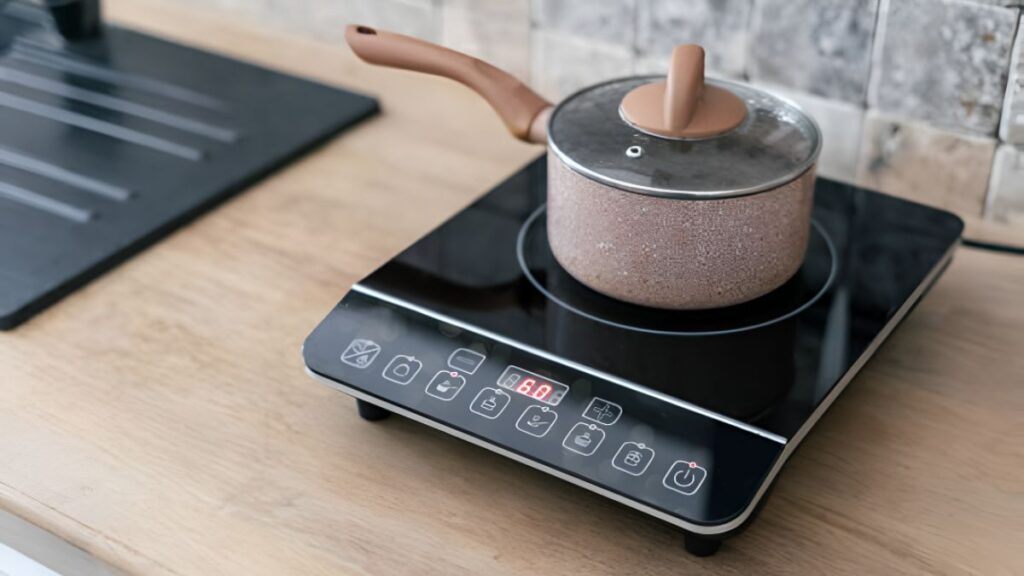Why Induction Stoves Are Better Than Gas – The Clear Advantages for Modern Homes

For decades, gas stoves have been the gold standard in home cooking, praised for their precision and speed. However, a superior alternative has emerged—induction cooking. While many assume gas is unbeatable, induction stoves outperform them in nearly every way: speed, efficiency, safety, and even health benefits. If you’re still “cooking with gas,” it’s time to upgrade to the future of kitchen technology.
Induction vs. Gas: Why Induction Wins
1. Induction is Faster Than Gas
Gas stoves have long been marketed as the fastest way to cook, but induction stoves leave them in the dust. According to Consumer Reports, induction stoves boil water 20–40% faster than the best gas stoves. Since boiling speed is a key indicator of overall cooking performance, this makes induction the clear winner.
The phrase “now we’re cooking with gas” is outdated. A more accurate slogan would be “now we’re cooking with magnets.”
2. Induction is More Efficient Than Gas
Gas stoves waste an astonishing amount of energy. The EPA estimates that gas stoves transfer only 32% of their energy to the cookware—the rest escapes as ambient heat, warming your kitchen instead of your food. This inefficiency is even worse if you use air conditioning, as you’re then spending extra energy to cool the room heated by your stove.
In contrast, induction stoves operate at around 85% efficiency, nearly three times better than gas. Since heat is generated directly in the cookware, your kitchen stays cooler, making cooking more comfortable—especially in summer.
3. Induction Pollutes Your Home Less Than Gas
Burning natural gas releases harmful pollutants, including nitrogen dioxide (NO₂) and carbon monoxide (CO). A 2024 study published in Science Advances linked gas stoves to 50,000 childhood asthma cases—about 12.7% of total cases. Worse, gas stoves may emit benzene (a known carcinogen) and other toxins, even when turned off.
While using a vent hood or opening windows can mitigate risks, the best solution is switching to induction, which produces zero indoor emissions.
4. Induction is Safer Than Gas
Safety is another major advantage:
- No open flames – Eliminates fire hazards from accidental burner activation.
- No gas leaks – Removes the risk of dangerous gas buildup.
- Cool-to-touch surface – Unlike gas or electric coils, induction cooktops stay cool unless a pot is present.
- Auto shut-off – Most models turn off when cookware is removed, preventing energy waste.
Forgetful cooks (like me) will appreciate that leaving an induction burner on without a pot does nothing—no heat, no danger.
The Downsides of Induction Stoves
While induction is superior in most ways, there are a few drawbacks:
- Cookware Compatibility – Only ferromagnetic pots (cast iron, stainless steel) work. Test with a magnet—if it sticks, it’s compatible.
- Initial Cost – Induction stoves can be pricier upfront, though long-term energy savings offset this.
- Learning Curve – Some users need time to adjust to precise temperature controls.
- Fragile Glass Surface – Induction cooktops can scratch if not cared for properly.
Workaround: If your favorite cookware isn’t induction-ready, an induction adapter plate can help—though it slows cooking.
Final Verdict: Induction is the Future
Induction stoves are faster, more efficient, healthier, and safer than gas. While the transition may require new cookware, the benefits far outweigh the costs. Once you experience the speed and precision of induction, you’ll wonder why you ever cooked with gas.
Make the switch—your kitchen (and lungs) will thank you.









